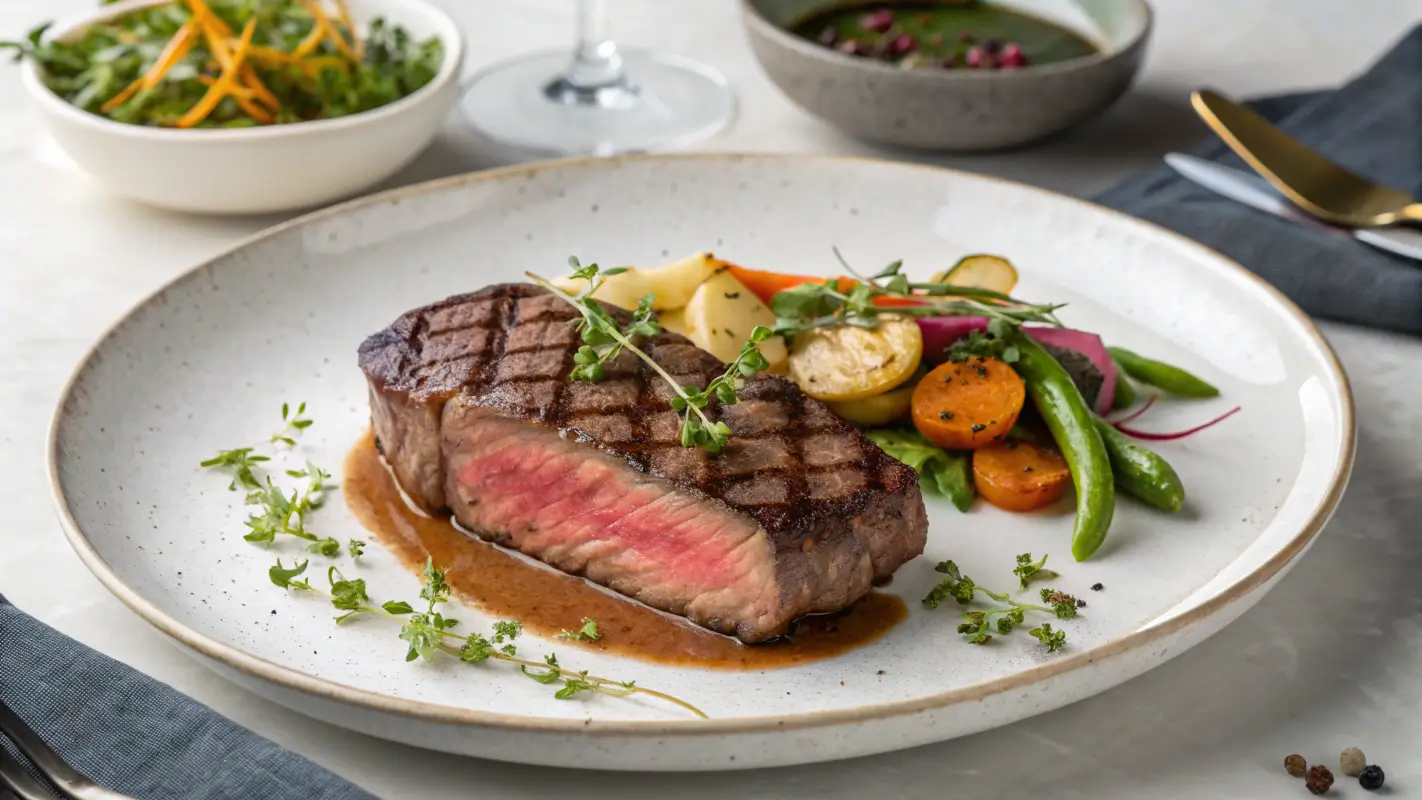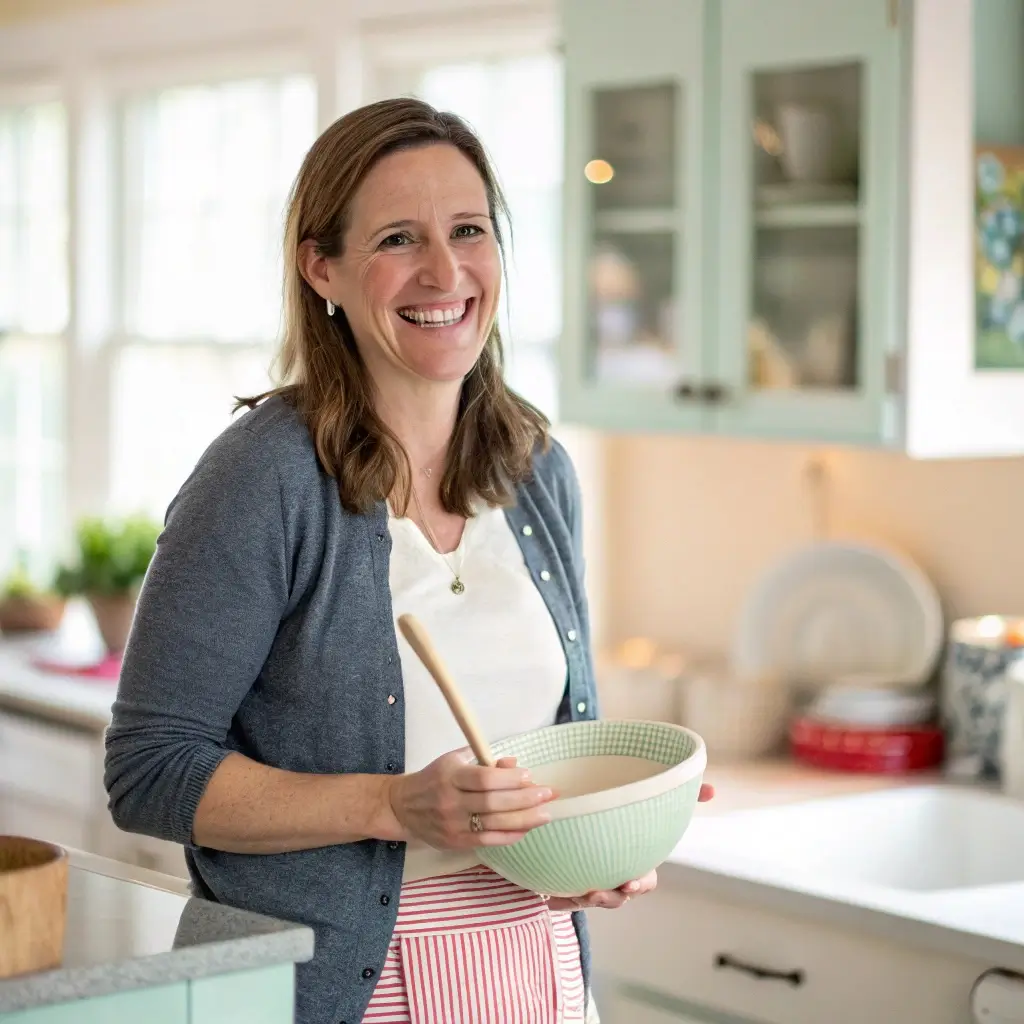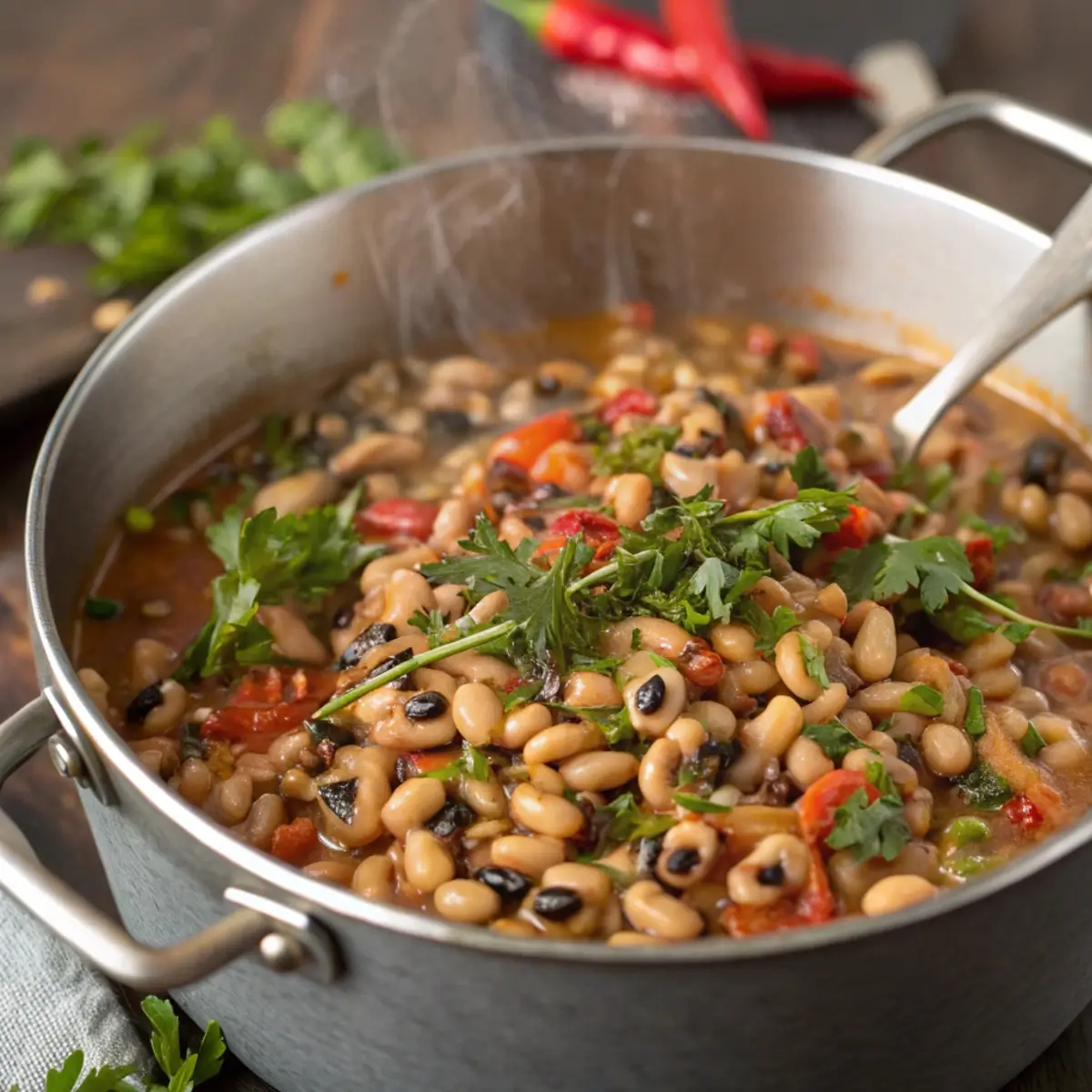Table of Contents
- 1 Introduction to Sous Vide Recipes
- 2 Essential Equipment for Sous Vide Recipes
- 3 Sous Vide Recipes Cooking Techniques
- 4 Sous Vide Recipes for Meat and Poultry
- 5 Sous Vide Recipes for Seafood
- 6 Sous Vide Recipes Vegetables
- 7 Sous Vide Recipes for Breakfast and Desserts
- 8 Advanced Sous Vide Techniques
- 9 Troubleshooting Common Sous Vide Issues
Sous vide cooking is more than just a trendy kitchen technique—it’s a precision method that allows you to unlock flavors and textures you never thought possible. By cooking food in a vacuum-sealed bag, submerged in a precise temperature-controlled water bath, sous vide offers the most tender, flavorful dishes imaginable. Whether you’re looking to elevate your steak, enhance your veggies, or even experiment with desserts, sous vide opens up a whole new world of culinary possibilities. In this article, we’ll take you step by step through sous vide recipes, techniques, and tips, giving you the tools to become a master of precision cooking.
Introduction to Sous Vide Recipes
What is Sous Vide Cooking?
Sous vide, which means “under vacuum” in French, is a method of cooking where food is placed in a vacuum-sealed bag and then submerged in a water bath that maintains a constant, precise temperature. Unlike traditional cooking methods where temperatures can vary, sous vide ensures your food is cooked evenly, retaining moisture and flavors. This precision technique is particularly popular for cooking meats, but it’s also incredibly effective for vegetables, seafood, and even desserts.
The beauty of sous vide lies in its ability to cook food to the perfect level of doneness, consistently. Imagine a steak cooked to your exact preference every single time—whether you like it rare, medium-rare, or well-done—without worrying about overcooking.
History and Evolution of Sous Vide
Sous vide isn’t just a new cooking fad; it’s been around for decades. Initially popularized by French chefs in the 1970s, it was later refined by chefs like Heston Blumenthal and Thomas Keller, who realized the potential to achieve unmatched levels of consistency in the kitchen. Over time, sous vide moved from high-end kitchens to home kitchens, thanks to affordable immersion circulators and vacuum-sealing systems, making it accessible to anyone interested in perfecting their cooking techniques at home.
Today, sous vide cooking is used by both home cooks and professional chefs alike, as it allows for an unparalleled level of control over the cooking process. It’s not only about convenience but also about precision and flavor development that is hard to achieve with other methods.
Benefits of Sous Vide Cooking
Why should you consider trying sous vide? For one, it gives you control like never before. With sous vide, you can cook food at the precise temperature, ensuring that it doesn’t overcook or dry out. Additionally, it locks in flavors that other cooking methods may leave behind. Here are some of the key benefits:
- Consistency: Cook your dishes to perfection, every time.
- Flavor Retention: Food is cooked in its juices, maintaining maximum flavor.
- Texture: Achieve melt-in-your-mouth tenderness, especially with meats.
- Hands-off Cooking: Simply set it, forget it, and go about your day while your meal cooks slowly and steadily.
For instance, imagine your steak cooked to absolute perfection, crispy on the outside and juicy on the inside, with all the flavors sealed in. Sous vide brings this dream to life with minimal effort.
Essential Equipment for Sous Vide Recipes
Sous Vide Immersion Circulators
The key to sous vide cooking is the immersion circulator, a device that controls the water temperature. It’s like your personal chef, ensuring everything is cooked to perfection. You simply clip the immersion circulator onto the side of a pot or container, set the desired temperature, and let it do the work.
Some popular brands of immersion circulators include Anova, Joule, and Sansaire. Each has its own unique features, but they all offer reliable temperature control and ease of use. For beginners, opting for a user-friendly circulator with a solid app interface can make the process a breeze.
Vacuum Sealers and Bags
While sous vide cooking involves immersion in water, the food itself is not meant to be submerged directly. Instead, it’s sealed in special vacuum-seal bags. Vacuum sealing ensures that the food is tightly sealed, preventing water from seeping in, while also promoting even cooking.
You can either use a traditional vacuum sealer or a handheld vacuum pump. The bags themselves are durable and heat-safe, allowing the food to be cooked at low temperatures for long periods without breaking down. For a cost-effective alternative, you can also use freezer-safe zip-top bags and the water displacement method, though this may not always provide the same tight seal as vacuum-sealed bags.
Sous Vide Containers and Lids
When cooking sous vide, it’s important to maintain the water temperature consistently. Large pots work fine, but dedicated sous vide containers are often a better choice for temperature stability. These containers are designed to fit the immersion circulator, ensuring a uniform water flow around the food.
Most sous vide containers come with optional lids to reduce evaporation during long cooking sessions. This is especially useful when cooking for extended periods, such as for meats or large cuts of fish, ensuring the water level stays consistent.
Sous Vide Recipes Cooking Techniques
Temperature and Time Guidelines
Sous Vide Recipes cooking is all about precision, and that precision starts with temperature control. Each food item has an optimal cooking temperature and time that helps it reach the perfect doneness without overcooking.
For example, a steak typically cooks at 129°F (54°C) for medium-rare, while chicken breasts should be cooked at 140°F (60°C) for juiciness. Fish, on the other hand, cooks at lower temperatures—think 125°F (52°C) for a flaky texture. The beauty of sous vide is that it doesn’t matter how long you cook your food, as long as it’s within the correct time frame—this allows you to cook dishes overnight or for hours without fear of them being overdone.
A handy guide to remember:
- Steak: 130-135°F for medium-rare (1-2 hours)
- Chicken: 140°F for 1-2 hours
- Salmon: 125°F for 30 minutes to 1 hour
- Vegetables: 180°F for 1-2 hours
- Eggs: 145°F for 1 hour
Pro Tip: Since sous vide cooking involves longer cooking times, it’s perfect for tougher cuts of meat like brisket or short ribs, which need a low-and-slow approach to break down the collagen and become tender.
Sealing Methods
When sealing your food, the method you choose will depend on your equipment and desired results. The most common method is using a vacuum sealer, which sucks all the air out of the bag and creates a tight, airless environment. This is ideal for even cooking, especially for meats.
Alternatively, the water displacement method involves partially submerging a zip-top bag in water, allowing the water pressure to force the air out before sealing it shut. While effective, it’s not as foolproof as vacuum sealing, especially for larger portions of food.
Finishing Techniques
While sous vide cooking is all about hands-off preparation, you’ll likely want to add a little extra flair to your dish once it’s cooked. This is where finishing techniques come into play. The most common post-sous-vide steps involve searing, grilling, or broiling.
For meats like steak or chicken, a quick sear in a hot pan adds a delicious crispy crust. Simply heat a tablespoon of oil in a cast-iron skillet until it’s smoking hot, then sear each side of the meat for 1-2 minutes to develop flavor and texture.
For vegetables, a quick grill or roast after sous vide cooking can add a smoky or caramelized touch, elevating the natural flavors.
Sous Vide Recipes for Meat and Poultry
Sous Vide Steak
One of the most popular reasons people fall in love with sous vide is the perfect steak. With sous vide, you can achieve that elusive, restaurant-quality steak without any guesswork.
To make the perfect sous vide steak, set your immersion circulator to 130°F (54°C) for a medium-rare result. Place your seasoned steak in a vacuum-sealed bag, ensuring it’s sealed tightly. Cook it for 1-2 hours, depending on the thickness of the cut. Once done, remove the steak, pat it dry, and sear it in a hot skillet for a minute or two on each side. This method ensures that every part of the steak is evenly cooked, from edge to edge.
Sous Vide Chicken Breasts
Chicken breasts can easily dry out when cooked traditionally, but sous vide ensures that they remain juicy and tender. Set your circulator to 140°F (60°C) for the juiciest, most tender chicken breasts you’ve ever had. Cook for 1-2 hours, then finish with a quick sear on the skillet for an added texture.
Pro Tip: You can also add herbs like rosemary, thyme, or garlic to the bag before sealing it to infuse the chicken with additional flavor.
Sous Vide Duck Breast
Sous vide is also perfect for cooking duck breast to perfection. Set your circulator to 135°F (57°C) for a medium-rare result. After cooking, sear the skin side in a hot pan until it crisps up beautifully. Duck breast cooked sous vide is tender, juicy, and has a crispy skin—perfect for impressing guests or enjoying a gourmet meal at home.
Sous Vide Recipes for Seafood
Sous Vide Salmon
Salmon is a fantastic candidate for sous vide cooking, as it can be cooked perfectly to your preferred doneness without drying out. The best part? It’s incredibly simple. Set your immersion circulator to 125°F (52°C) and cook for 45 minutes to 1 hour for a tender, flaky, and slightly translucent salmon fillet. The precise temperature ensures the fish stays juicy, and the slow cooking allows all the flavors to develop beautifully.
Pro Tip: To enhance flavor, try adding a few slices of lemon, herbs like dill or thyme, or a splash of olive oil into the vacuum bag before sealing it. After cooking, quickly sear the salmon in a hot pan for a crispy skin.
Sous Vide Shrimp
Shrimp is another perfect seafood for sous vide. At a temperature of 140°F (60°C), shrimp become plump and tender without being rubbery, which can often happen when boiled or pan-fried. Simply place the shrimp in a vacuum-sealed bag with some garlic, butter, and herbs. Cook them for 30 minutes to 1 hour. Once they’re done, you can finish them with a quick sear in a pan or serve them as is.
Pro Tip: Shrimp can be cooked with a variety of flavors—think chili flakes for heat or lemon zest for a citrusy punch. It’s a versatile dish that pairs well with almost any side, from pasta to rice.
Sous Vide Lobster Tail
Lobster tail cooked sous vide will make you feel like you’re at a five-star restaurant. To cook lobster tails, set your immersion circulator to 140°F (60°C) for 1 to 1.5 hours. The lobster will be perfectly tender and succulent, with the added benefit of not being overcooked.
Finishing Tip: Once cooked, brush the lobster tail with butter and sear it on the grill or in a hot pan for a few seconds to develop a nice char. Pair with garlic butter for an indulgent treat.
Sous Vide Recipes Vegetables
Sous Vide Carrots
Sous vide carrots come out so tender and flavorful, you’ll never want to cook them any other way. Set your immersion circulator to 183°F (84°C) and cook for 1 hour. The result is a perfect texture with concentrated sweetness, making them ideal for serving as a side dish or adding to salads.
Pro Tip: You can enhance the flavor by adding butter, honey, or fresh herbs like thyme to the bag before sealing it. This will infuse the carrots with delicious, aromatic flavors as they cook.
Sous Vide Asparagus
Asparagus is another vegetable that shines with sous vide cooking. Cook it at 180°F (82°C) for about 30-45 minutes to achieve a tender yet slightly crisp texture. The flavor will be much more concentrated than traditional methods, and it will retain its vibrant green color.
Pro Tip: Before sealing, drizzle the asparagus with olive oil or butter, and add a pinch of salt and pepper. You can also sprinkle some parmesan cheese or a squeeze of lemon juice after it’s done cooking for an extra pop of flavor.
Sous Vide Potatoes
Potatoes cooked sous vide are remarkably creamy and soft, making them an excellent addition to your repertoire. For perfectly tender potatoes, set your immersion circulator to 190°F (88°C) and cook for 1 to 1.5 hours. You can either cook them whole or sliced, depending on your preference.
Pro Tip: Add fresh herbs or a garlic clove to the bag for added aroma. After cooking, toss them in olive oil and roast them in the oven for a crispy finish if desired.
Sous Vide Recipes for Breakfast and Desserts
Sous Vide Eggs
Sous vide eggs are the epitome of smooth and silky. To achieve the perfect texture, set your immersion circulator to 145°F (63°C) and cook for about 1 hour. The result is a soft, custardy egg with an incredibly tender white. If you prefer hard-boiled eggs, cook them at 165°F (74°C) for 45 minutes to 1 hour.
Pro Tip: After cooking, you can quickly sear the eggs in a hot pan for a slightly crispy texture on the outside, or simply crack them into a bowl for a luscious, runny yolk.
Sous Vide Custard
Sous vide is also a great method for making silky smooth custards and puddings. Set your circulator to 180°F (82°C) and cook the custard for about 1 hour. The slow cooking ensures even thickening, without the risk of curdling or separating.
Pro Tip: Flavor your custard with vanilla, chocolate, or spices like cinnamon for a decadent dessert that requires minimal attention while cooking.
Sous Vide Cheesecake
Sous vide can even be used to create a rich, creamy cheesecake. To make sous vide cheesecake, prepare your ingredients as usual and pour them into individual jars. Set your circulator to 175°F (79°C) and cook for 1 to 1.5 hours. This method produces a dense, perfectly cooked cheesecake every time, without the risk of cracking that often happens in the oven.
Pro Tip: Let the cheesecakes cool before refrigerating. Once chilled, you can top them with fresh fruit, whipped cream, or a drizzle of caramel for an indulgent treat.
For more cooking inspiration, visit our site for a variety of mouthwatering recipes.
Advanced Sous Vide Techniques
Infusing Flavors with Sous Vide
One of the best things about sous vide cooking is how well it allows you to infuse flavors. Because the vacuum-sealed bags trap all the natural juices and aromas, they intensify the food’s flavor profile.
For example, you can infuse oils with herbs, create custom broths, or even make flavored butters. To infuse olive oil with garlic, rosemary, or chili, simply place the herbs and oil in a bag and cook it at 180°F (82°C) for 1-2 hours. This method will give you a richly flavored oil that can be drizzled over veggies, grilled meats, or salads.
Sous Vide for Meal Prep
Sous vide is also fantastic for meal prepping. You can cook multiple portions of chicken, steak, vegetables, or even rice and grains ahead of time. The beauty of this method is that your meals will stay fresh and retain their flavor, texture, and moisture even after being refrigerated or frozen.
Set your circulator to the appropriate temperature for each type of food and batch cook your meals. Once done, portion them into containers, and when ready to eat, simply reheat in hot water. This method is efficient and helps to maintain the quality of your meals.
Explore a variety of sous vide recipes on Allrecipes’ Sous Vide Collection.
Troubleshooting Common Sous Vide Issues
Problem: Food Not Cooking Evenly
Sous vide cooking relies on precise temperatures, so uneven cooking can occur if your immersion circulator isn’t circulating the water properly. To ensure even cooking, check that the circulator is properly positioned, and that the food is placed correctly in the water bath, ensuring there’s enough space for the water to flow around the food.
Solution: Always monitor the water level and circulation, and don’t overcrowd the container.
Problem: Overcooked Food
Sous vide is known for its ability to prevent overcooking, but if you leave your food in the water bath for too long, it can still become overcooked. It’s important to follow the recommended cooking times and avoid extending the cooking period unless necessary.
Solution: Set a timer to prevent leaving the food in the water bath for longer than needed.
Problem: Undercooked Food
In some cases, food can be undercooked if it isn’t fully submerged in the water or if the temperature isn’t set high enough.
Solution: Double-check that the immersion circulator is set to the right temperature, and ensure the food is fully submerged in the water during the cooking process.





